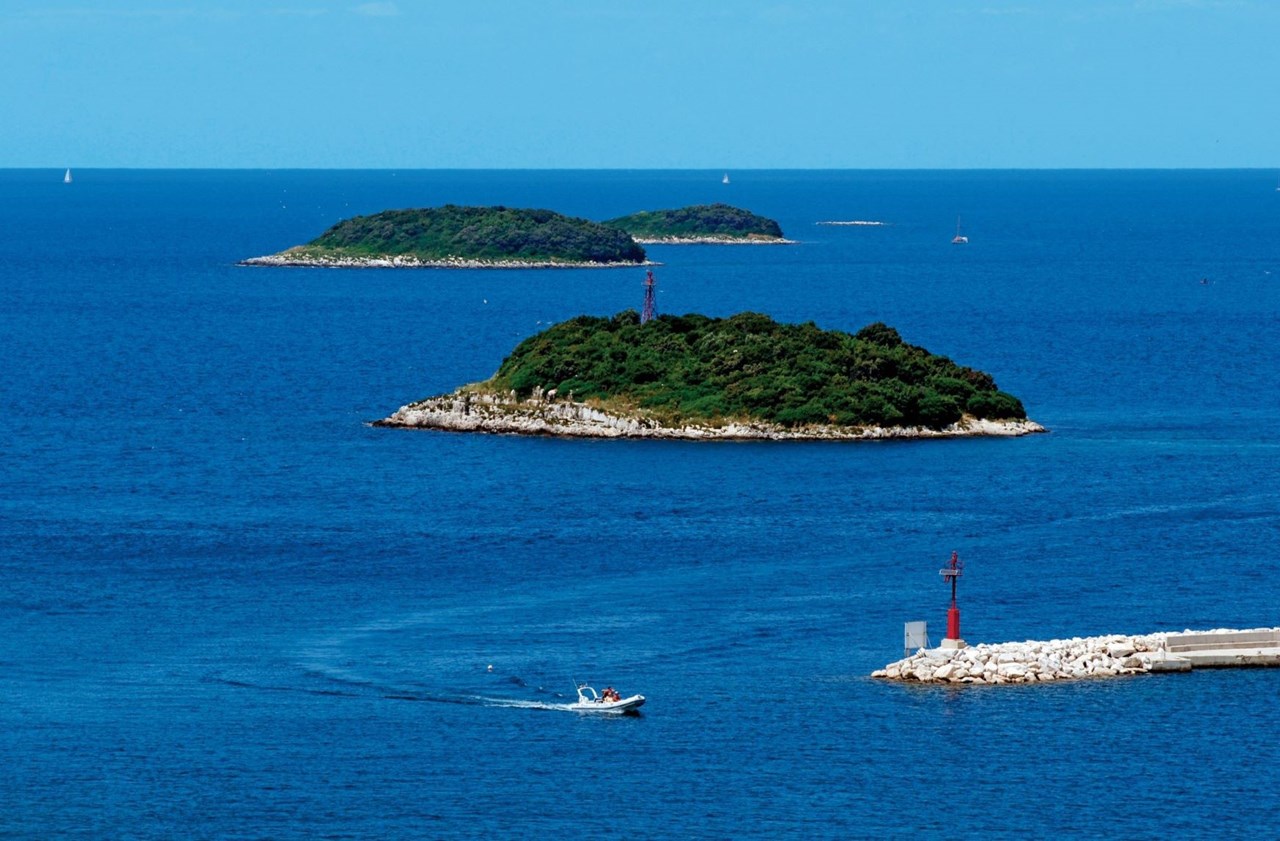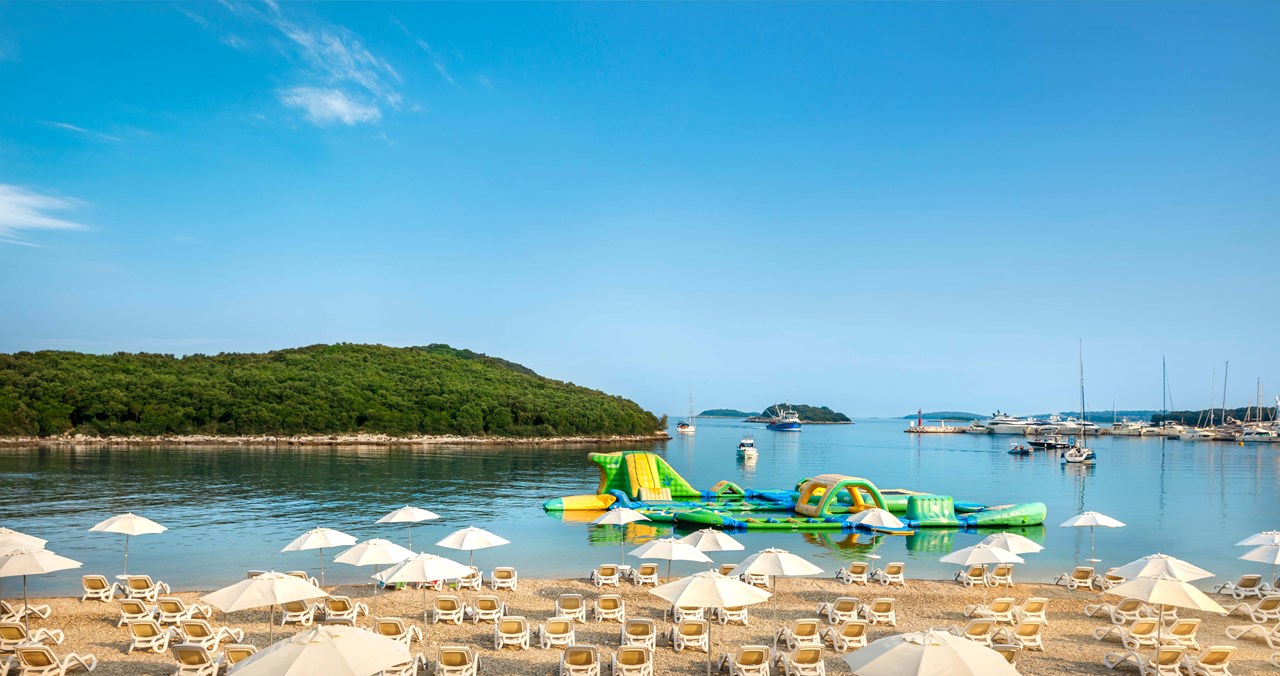

Saint George (Sveti Juraj ) is the largest island in the archipelago of Vrsar. It forms a natural shelter for the quayside of Vrsar and the modern marina. Its surface area is 112,408 m2, and its coastline is 1,733 m long.

The coastline of Vrsar is considered to be the most indented part of the Istrian coast.
The island has the same name as the church built on it; today it is an ideal destination for one-day excursions for the inhabitants of Vrsar and their guests.
The coastline of Vrsar, together with the Brijuni islands, is considered to be the most indented part of the Istrian coast. Sveti Juraj is the largest island in the archipelago of Vrsar. Its surface area is 112,408 m2, and its coastline is 1,733 m long. It is an island close to the coast, properly maintained, which makes it an ideal destination for one-day excursions. Throughout history, it was kept by the brotherhood of St George. Its unspoiled nature, a small stone church from the early medieval period, the old quarry, beaches and vegetation dominated by evergreen oak trees (Lat. Quercus ilex) and a number of pine trees create a relaxing ambiance for leisure in tune with nature.
The island is properly maintained. A network of several hiking trails runs across it, allowing leisurely visitors to visit all its parts. The island may be visited during the day. On its eastern side, blow the Church of St George, there is a suitable small anchorage which allows disembarking onto the island. Many visitors will want to swim the distance between the mainland and the island and thus get the opportunity to enjoy a unique – somewhat different – view of the old town centre, quayside and marina of Vrsar.
Many visitors will want to swim the distance between the mainland and the island.

Wild rabbits and game used to inhabit the island throughout history, but it was forbidden to hunt them.
On the island of Sveti Juraj, near the quarry on its highest point on the west side, there is an ancient spring of water that used to be maintained. It is likely that Vrsar was named after it (Lat. Ursaria)